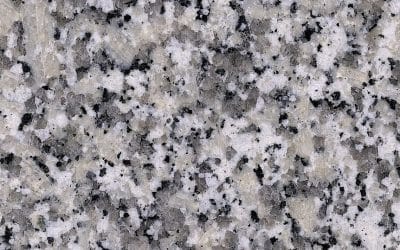Marble surfaces add elegance to any space, but they require special care. Oil stains can mar their beauty, leaving unsightly marks. Understanding how to remove these stains is crucial for maintaining marble’s allure.
Acting quickly is key when oil spills occur. The porous nature of marble means oil can seep in fast.
This guide will walk you through effective methods for oil stain removal from marble. You’ll learn step-by-step techniques to restore your marble’s pristine condition.
Whether you’re a homeowner or a cleaning professional, these tips will help you tackle oil stains with confidence. Let’s preserve the beauty of your marble surfaces together.
Understanding Oil Stains on Marble
Marble is known for its beautiful, luxurious appearance. However, it’s also a porous stone, which makes it vulnerable to stains, especially from oils. The material’s natural pores can quickly absorb liquids, leading to persistent discoloration.
Understanding why oil stains pose a problem is the first step. The porous surface allows oil to penetrate, making it difficult to remove completely without proper methods. Grasping this concept helps in choosing the best cleaning approach.
Here are key points to consider about oil stains on marble:
- Marble’s porosity increases stain susceptibility.
- Oils can quickly seep and set in if not addressed.
- Effective cleaning requires specific, timely techniques.
Knowing these attributes of marble prepares you to tackle oil stains efficiently.
Immediate Actions: What to Do When Oil Spills on Marble
When oil spills on marble, quick action is vital. The sooner you address the spill, the better the outcome for your marble’s surface.
First, resist the urge to rub. Instead, blot the spill gently. This helps to avoid spreading the oil further.
Here’s what to do immediately:
- Use a soft cloth to blot, not rub, the oil.
- Press gently to lift, not push, the oil deeper.
- Avoid spreading by working from the outer edges inward.
Handling the situation promptly can prevent permanent damage. Your vigilance protects your marble’s beauty and integrity.
Step-by-Step Guide: How to Get Oil Stain Out of Marble
Removing an oil stain from marble requires patience and care. Here’s a detailed guide to help you tackle this task effectively.
Start by gathering your materials. You’ll need baking soda, flour, and hydrogen peroxide to create a poultice. These ingredients are safe for marble and effective in lifting oil stains.
First, make a paste using these materials. Mix them until they achieve a thick consistency. This paste will work to draw the oil from the marble.
Apply the poultice to the stained area generously. Ensure the entire stain is covered by the mixture.
Next, cover the poultice with plastic wrap. Secure the edges to keep the mixture moist, allowing it to work deeper into the marble surface.
Let the poultice sit undisturbed for 24-48 hours. This waiting period is crucial for the stain removal process.
After the allotted time, remove the plastic wrap. Gently scrape away the dried poultice using a plastic scraper or a soft spatula.
Finally, wipe the area with a damp cloth. Ensure no residue is left behind, then dry the surface thoroughly.
If the stain persists, repeat this process. Occasionally, stubborn stains require multiple applications for complete removal.
Making and Applying a Poultice for Oil Stain Removal from Marble
Creating a poultice is an effective solution for stubborn oil stains. This method involves simple, readily available ingredients.
To begin, gather baking soda and hydrogen peroxide. These are safe for your marble and highly effective.
Steps to make a poultice:
- Combine baking soda and hydrogen peroxide. Aim for a thick, paste-like texture.
- Apply this paste generously over the stain.
- Cover the paste with plastic wrap. Seal the edges to keep it moist.
Allow the poultice to work for 24-48 hours. Patience in this stage is key to success.
Once the time has elapsed, remove the plastic wrap. Gently lift the dried paste using a soft tool.
Wipe the area clean with a damp cloth. If necessary, repeat the process for tougher stains.
Removing Stubborn Oil Stains: When One Treatment Isn’t Enough
Some oil stains refuse to budge after a single treatment. In such cases, persistence is essential.
Repeat the poultice application. Each application helps lift more of the stain from the marble.
For especially tough stains, consider these tips:
- Adjust the paste consistency for stubborn areas.
- Let it sit longer for deeper absorption.
- Continue to monitor progress patiently.
When repetitive treatments aren’t effective, consult a professional. Their expertise can ensure your marble’s integrity is preserved.
Preventing Future Oil Stains on Marble
Prevention is always better than cure, especially when it comes to marble. Taking simple steps can significantly reduce the risk of oil stains.
Implement these preventive measures:
- Use coasters and placemats to protect surfaces.
- Regularly seal your marble to create a barrier against stains.
- Clean spills immediately to prevent absorption.
Consistent maintenance helps preserve the beauty of your marble. Implementing these practices ensures your marble remains stunning and stain-free for years to come.
Common Mistakes to Avoid in Oil Stain Removal from Marble
Avoiding errors can make a significant difference in stain removal success. Careless mistakes can damage marble or make stains worse.
Here are common pitfalls to avoid:
- Rubbing the stain, which can spread the oil.
- Using acidic cleaners like vinegar, which can etch marble.
- Skipping the test patch before using new cleaning solutions.
Steer clear of these errors to protect your marble from damage while effectively removing oil stains. Proper techniques safeguard your marble’s timeless elegance.
When to Call a Professional for Oil Stain Removal from Marble
Sometimes, despite your best efforts, oil stains persist. When stains don’t fade after repeated treatments, consider professional help.
Experts have specialized tools and knowledge to tackle deep-set stains. Seeking professional assistance can save time and preserve your marble’s integrity. Let the pros handle tough stains for lasting beauty.
Conclusion: Keeping Your Marble Surfaces Beautiful
Marble surfaces offer timeless elegance to any space. Maintaining their pristine condition involves swift stain removal and routine care.
By addressing stains promptly and following preventive measures, your marble can remain stunning. With these tips, you ensure your marble surfaces continue to impress for years.










0 Comments